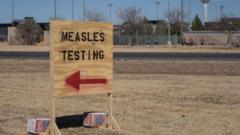The recent death of Paul Varry, a 27-year-old cyclist allegedly killed by an SUV driver, highlights the urgent need for better infrastructure and increased safety awareness amidst Paris's cycling revolution. As the city embraces cycling, advocates argue for more space and clearer regulations to protect cyclists on the roads.
Tragedy in Paris: The Cycling Revolution Faces Dark Realities

Tragedy in Paris: The Cycling Revolution Faces Dark Realities
The tragic death of a young cyclist exposes the precarious balance between rising cycling popularity and road safety in Paris.
The dream of a cycling-friendly Paris has been marred by tragedy following the death of 27-year-old Paul Varry, who was reportedly struck by an SUV while cycling home. The incident has cast a shadow over the city's cycling revolution, which has significantly increased bike usage in recent years.
Paul Varry was cycling on Boulevard Malesherbes when he was hit by a driver who allegedly invaded the bike lane. Witnesses report that the driver ran over Paul's foot, prompting him to bang on the car's hood. In a chaotic scene captured by CCTV, the SUV driver initially reversed but then allegedly drove forward, hitting Varry. The 52-year-old driver has been charged with murder, though his attorney claims it was an unfortunate accident.
Paris is currently experiencing a cycling boom, with cycling now accounting for over 11% of trips, up from just 4% by car. Over the past decade, the city has invested €400 million to create more than 1,000 kilometers of bike lanes as part of Mayor Anne Hidalgo's vision. However, despite these efforts, safety concerns persist—many cyclists encounter poorly designed or inconsistently marked lanes, leading to confusion and danger on the roads.
Nathalie Tison, Paul’s mother, reflected on her son’s spirit and commitment to cycling, revealing that she had always worried about his safety in a city where drivers can exhibit aggressive behavior. Advocates like Rémi Féraud, a senator, emphasize that while they don't envision a fully car-free city, they seek to prioritize space for cyclists and reduce the number of cars on the road.
Despite growing support for cycling infrastructure, some drivers feel marginalized by the changes, arguing that the reduction in road space has made driving more difficult, particularly for those traveling from suburban areas. Critics of current policies claim the government has blindly prioritized cyclists without addressing the needs of all road users.
As the tension rises between cycling enthusiasts and motorists, the tragic fate of Paul Varry serves as a poignant reminder of the precariousness of cycling in urban areas. His death has ignited discussions about the necessity of establishing proper regulations and enhancing safety measures for cyclists.
While authorities have yet to set a trial date for the driver charged in Paul’s case, his story has resonated deeply within the community. Nathalie Tison hopes that her son's legacy will spur lasting change in the city, reinforcing the need for safer roads for all, cyclists, and drivers alike.
"The city has made strides, but as we remember Paul, we must push harder for a future where no family has to suffer such a loss," she stated, reflecting the ongoing struggle for street safety in the evolving landscape of Paris.




















